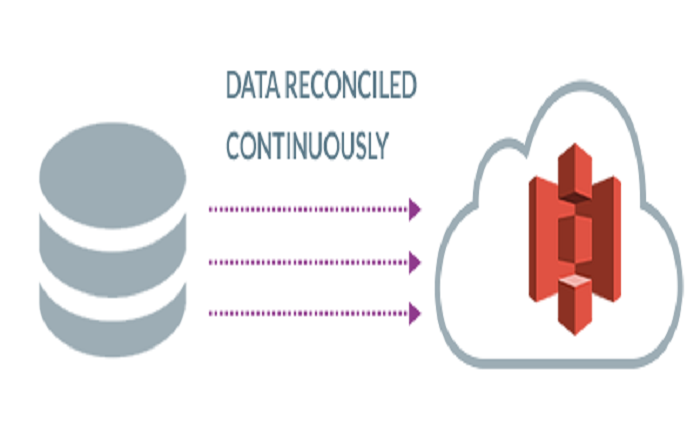In the realm of modern data management, the integration of Oracle databases with Amazon Simple Storage Service (S3) emerges as a transformative solution. This comprehensive exploration delves into the intricacies of Oracle to S3 integration, shedding light on key functionalities, implementation strategies, and the myriad benefits it brings to organizations navigating the cloud landscape.
Understanding Oracle to S3 Integration: A Symphony of Data Collaboration
Oracle to S3 Integration Defined:
The integration between Oracle databases and Amazon S3 is a strategic move towards unlocking the potential of cloud storage. It allows organizations to seamlessly transfer and store data in highly scalable and durable S3 buckets, providing a flexible and cost-effective alternative to traditional on-premises storage.
Key Components of Oracle to S3 Integration:
Oracle Database Cloud Service:
At the heart of the integration lies Oracle Database Cloud Service, acting as the source of data. This cloud-based service facilitates efficient management, scalability, and accessibility of Oracle databases.
Amazon S3 Buckets:
On the receiving end, Amazon S3 buckets serve as the storage repositories. These scalable containers enable organizations to store vast amounts of data securely and access it on demand.
Integration Tools and Protocols:
The integration process relies on robust tools and protocols that ensure the seamless flow of data between Oracle databases and Amazon S3. These tools often leverage protocols like HTTPS or SFTP for secure and efficient data transfer.
Scalability and Flexibility:
One of the primary advantages of Oracle to S3 integration is the scalability it offers. Amazon S3 provides virtually unlimited storage capacity, allowing organizations to scale their data storage needs without the constraints of physical infrastructure.
Cost-Effective Storage Solutions:
By leveraging Amazon S3, organizations can achieve cost-effective storage solutions. With a pay-as-you-go pricing model, businesses only pay for the storage they use, optimizing costs and eliminating the need for upfront investments in hardware.
Enhanced Data Accessibility:
Integration with Amazon S3 enhances data accessibility by providing a centralized and globally accessible storage repository. This accessibility fosters collaboration, as teams can retrieve and work with data regardless of geographical location.
Implementation Strategies for Oracle to S3 Integration: A Roadmap to Success
Security Protocols:
Before embarking on Oracle to S3 integration, organizations must prioritize security. Implementing robust encryption protocols during data transfer and storage ensures the confidentiality and integrity of sensitive information.
Data Mapping and Transformation:
Efficient integration involves meticulous data mapping and transformation. Organizations should define clear mapping rules to ensure that data from Oracle databases aligns seamlessly with the structure required in Amazon S3 buckets.
Monitoring and Optimization:
Continuous monitoring and optimization are critical for a successful integration. Proactive monitoring helps identify potential issues, while optimization strategies ensure that data transfer remains efficient and cost-effective over time.
Data Consistency and Synchronization:
Maintaining data consistency and synchronization between Oracle databases and Amazon S3 can pose challenges. Implementing strategies like periodic synchronization and version control mitigates these concerns.
Network Latency and Bandwidth:
Integration performance can be influenced by network latency and bandwidth constraints. Organizations need to assess and optimize their network infrastructure to facilitate smooth and rapid data transfer.
While Oracle to S3 integration brings forth a multitude of advantages, organizations must address challenges related to data consistency. Ensuring that data remains consistent between Oracle databases and Amazon S3 is crucial for accurate decision-making. Implementing robust synchronization mechanisms, such as real-time data mirroring or periodic batch updates, helps overcome this challenge. Additionally, version control mechanisms can be employed to track and manage changes, ensuring a cohesive data environment.
Fine-Tuning Performance: Mitigating Network Latency and Bandwidth Hurdles
The performance of Oracle to S3 integration is intricately linked to network latency and bandwidth capabilities. Organizations must proactively assess and optimize their network infrastructure to facilitate smooth and rapid data transfer. Employing techniques like data compression, optimizing data transfer protocols, and leveraging Content Delivery Networks (CDNs) can significantly enhance performance. This proactive approach ensures that integration processes operate efficiently, even in scenarios with varying network conditions.
Optimizing Security Measures: A Paramount Consideration
As organizations transition sensitive data from Oracle databases to Amazon S3, prioritizing security is paramount. Robust encryption protocols, both during data transfer and storage, act as a shield against potential threats. Implementing secure authentication mechanisms, such as Multi-Factor Authentication (MFA), adds layer of protection. Regular security audits and compliance checks help organizations stay vigilant and ensure that their data remains secure throughout the integration lifecycle.
Maximizing Cost-Efficiency: Strategic Storage Management
While Amazon S3 offers cost-effective storage solutions, organizations can further optimize costs through strategic storage management. Implementing data lifecycle policies allows organizations to automatically transition data to lower-cost storage tiers when it becomes less frequently accessed. Additionally, utilizing Amazon S3 features like object-level logging helps organizations gain insights into storage usage patterns, enabling informed decisions about storage optimization.
Continuous Improvement: Proactive Monitoring and Adaptation
Successful Oracle to S3 integration is an iterative process that requires continuous improvement. Proactive monitoring tools play a crucial role in identifying potential issues, bottlenecks, or security vulnerabilities. Regular performance assessments and adaptation of integration strategies based on evolving organizational needs ensure that the integration remains aligned with business objectives.
Fostering Collaboration: Leveraging Globally Accessible Data Repositories
The integration of Oracle databases with Amazon S3 not only enhances scalability but also fosters global collaboration. With data stored in globally accessible S3 buckets, teams spread across different geographical locations can seamlessly collaborate and access the latest information. This collaborative environment accelerates decision-making processes and promotes a culture of real-time data-driven insights.
Strategic Decision-Making: Harnessing the Power of Oracle to S3 Integration
As organizations harness the power of Oracle to S3 integration, they position themselves at the forefront of cloud excellence. This strategic decision-making not only optimizes data management but also aligns with broader business objectives. By addressing challenges, fine-tuning performance, optimizing costs, and fostering a collaborative data environment, organizations embark on a journey toward a dynamic and responsive data ecosystem. The integration becomes not just a technological advancement but a strategic imperative in an era where data is a cornerstone of organizational success.



